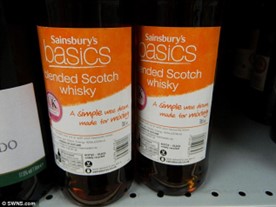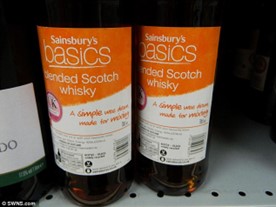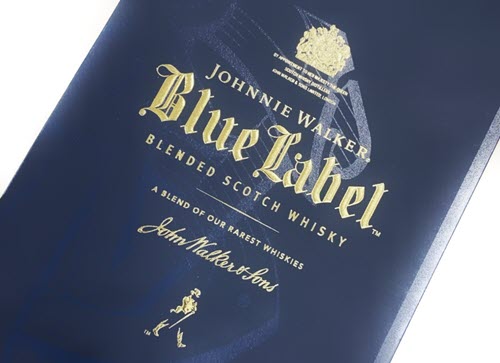For Premiumisation – Press Pause
Whisper it quietly, but the great two decades long trade-up may be drawing to a close, at least in some mature Scotch markets like the US. Then again, it might just prove a temporary blip, reports Tom Bruce-Gardyne for WhiskyInvestDirect...
It was in July 2007, that Charles O. Prince III, then CEO of Citigroup, made his infamous remark that: “When the music stops, in terms of liquidity, things will be complicated. But as long as the music is playing, you’ve got to get up and dance. We’re still dancing.”
We all know what happened next, and given the scale of the global financial crash things soon proved more than complicated. But that July nearly all bankers were on the dancefloor, refusing to believe the DJ was about to pull the plug and bring the party to an end. Could that be a moral for the spirits industry and its seemingly rock-solid faith in premiumisation – the ability of brands to persuade consumers to trade-up?
It has been a remarkably resilient trend that for Scotch whisky has lasted since the early noughties. The ‘P’ word is believed to have been coined a decade earlier when super-premium vodka began to surge in the States. Scotch was still draining its whisky loch at the time by dumping three-year-old bulk blends on markets like France and fuelling a boom in own-label whisky at home. Private-label and cheap tertiary brands had 40% of the UK off-trade in 2001 when Sainsbury’s were selling bottles with a plain white label stamped ‘Scotch Whisky’ for just £7.49. And they were still at it fifteen years later with their ‘basics’ range.

Premiumisation is the antithesis of such ugly commodification, and is exemplified by a brand like Diageo’s Johnnie Walker. Last July the then CEO, the late Sir Ivan Menezes, announced that Red Label’s net sales were up 20% in the company’s FY22 results, while Black Label grew by 40% and Blue Label by 60%. Clearly, the brand’s huge marketing spend had paid off as consumers dutifully traded their way up the range.
Playing a big part in all this was the pandemic. As Brooke Masters wrote in the FT in October about the US, Johnnie Walker Blue with its US$200 price tag “became one of the fastest growing brands, and Americans spent nearly a third more on spirits in 2022 than they did pre-pandemic.” Then, once released from Covid lockdowns, consumers hit the bars and restaurants “and splurged on super-premium alcohol again,” says Spiros Malandrakis, spirits analyst at Euromonitor.
“That takes us up to this Spring and that’s when things start getting a bit interesting,” he continues. In his view there is a disconnect between the available data and what is actually happening at present. “Everyone continues to talk about premiumisation not losing momentum, but they’re talking about something 6-7 months ago,” he says. Masters believes the industry “forgot the simple rule that all things - even boozy nights out - come to an end. With rising inflation and the resumption of student loan payments, Americans burnt through much of their extra savings and they now have other needs.”
We are just talking of one market, albeit by far the most valuable for Scotch whisky. In 2022 US imports were worth just over £1 billion, over double the next biggest market – France. We will have to wait and see what this year’s shipments reveal. Hopefully things won’t be as bad as Cognac, a drink Malandrakis says is “genetically associated with premiumisation” and one that is “collapsing right now in the US.” In the six months to September, Rémy Cointreau’s Cognac division plummeted 30.1% due to a steep decline in North America, in part because its top-selling rival - Hennessy has been slashing prices to protect its market share.
In Diageo’s most recent results, Johnnie Walker had a strong year but not in the US where the brand’s net sales fell 13% in FY23, while Blue Label managed just 3% global growth compared to 60% twelve months earlier. This is clear evidence that premiumisation has slowed right down, but whether it has come to a halt in some of its biggest markets is not something anyone in the Scotch whisky industry is admitting, at least not publicly.
Debra Crew, Diageo’s CEO, did her best to calm investors and analysts last week after the company’s share price slumped 16% following a shock profit warning caused by trouble in Latin America. She insisted that consumer downtrading and reluctance to spend in the region was “an isolated issue” and that “sentiment relative to our industry is improving.” And naturally she invoked premiumisation and explained that ‘premium and above’ spirit’s market share had gone from 25% to 35% in the past decade, while ‘super premium-plus’ spirits have grown at double the rate of other price bands.
But right now, continued trading up looks a lot less certain. In Germany and the UK, Spiros Malandrakis gloomily predicts “a proper old-school recession”. Here, he reckons we can expect some discounting, but no big return to “private label Scotch. Consumers will go for the most affordable branded Scotch, or to an adjacent category like premium rum.” Much depends on brand owners holding their nerve and not indulging in a race to the bottom price war. If they can ride out the storm, who knows - in a couple of years we might be back to premiumisation? But for now, like those bankers lost in music, simply repeating the word won’t be enough - a word which curiously for all its repetition, is still not in the dictionary.

Award-winning drinks columnist and author Tom Bruce-Gardyne began his career in the wine trade, managing exports for a major Sicilian producer. Now freelance for 20 years, Tom has been a weekly columnist for The Herald and his books include The Scotch Whisky Book and most recently Scotch Whisky Treasures.
You can read more comment and analysis on the Scotch whisky industry by clicking on Whisky News.





